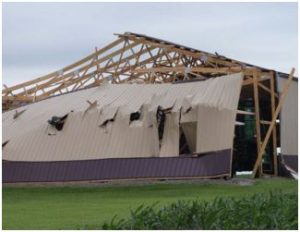Biking On Down the Highway
Author’s Note: This is part 6 of a series of blogs written from a 6500+ motorcycle trip from WA to Ohio and back. See Blog from Oct. 15th for the beginning…and hang on for the ride!
Time for another lumber yard visit.
 They are in Michigan (I am really not trying to pick on Michigan). Their statement, “Builders here do not like to have to build to wind loads”!!
They are in Michigan (I am really not trying to pick on Michigan). Their statement, “Builders here do not like to have to build to wind loads”!!
Say WHAT???
Last I heard… buildings were to be constructed to resist wind, snow and seismic loads. I was totally unaware of a Michigan exemption against building to support wind loads!
It turns out the majority of the buildings provided by this lumber yard are agriculturally exempt, so they are not designing them for any particular load resistance characteristics.
The 2009 and earlier versions of the IBC (International Building Code) require a design wind speed for all of Michigan of 90 mph (miles per hour). The 2012 Code has bumped this up to 105 mph for Risk Category I buildings (buildings with a low risk to human life in the event of a failure) and 115 mph for Risk Category II (most inhabited structures, like homes).
Clearly ignoring wind loads appears to be an undertaking with a high degree of risk involved.
As a general rule, they provide 6×6 pressure treated columns, regardless of the height of the building, wind speed and exposure and whether the building is fully enclosed with wind rated doors, or partially enclosed.
With structural columns spaced every eight feet, 2×4 Standard & better graded wall girts are placed flat on the outsides of the columns, at 24 inches on center.
Obviously I believe every building should be designed to adequately support all of the loads which are induced – including wind. Also, it is my personal feeling every building should be designed by a RDP (registered design professional – engineer or architect) who should be placing his or her seal on the plans as well as providing complete design calculations to verify the work being produced.
Failure to design for wind loads can only result in the eventual failure of buildings, hopefully without loss of life and/or limb.






